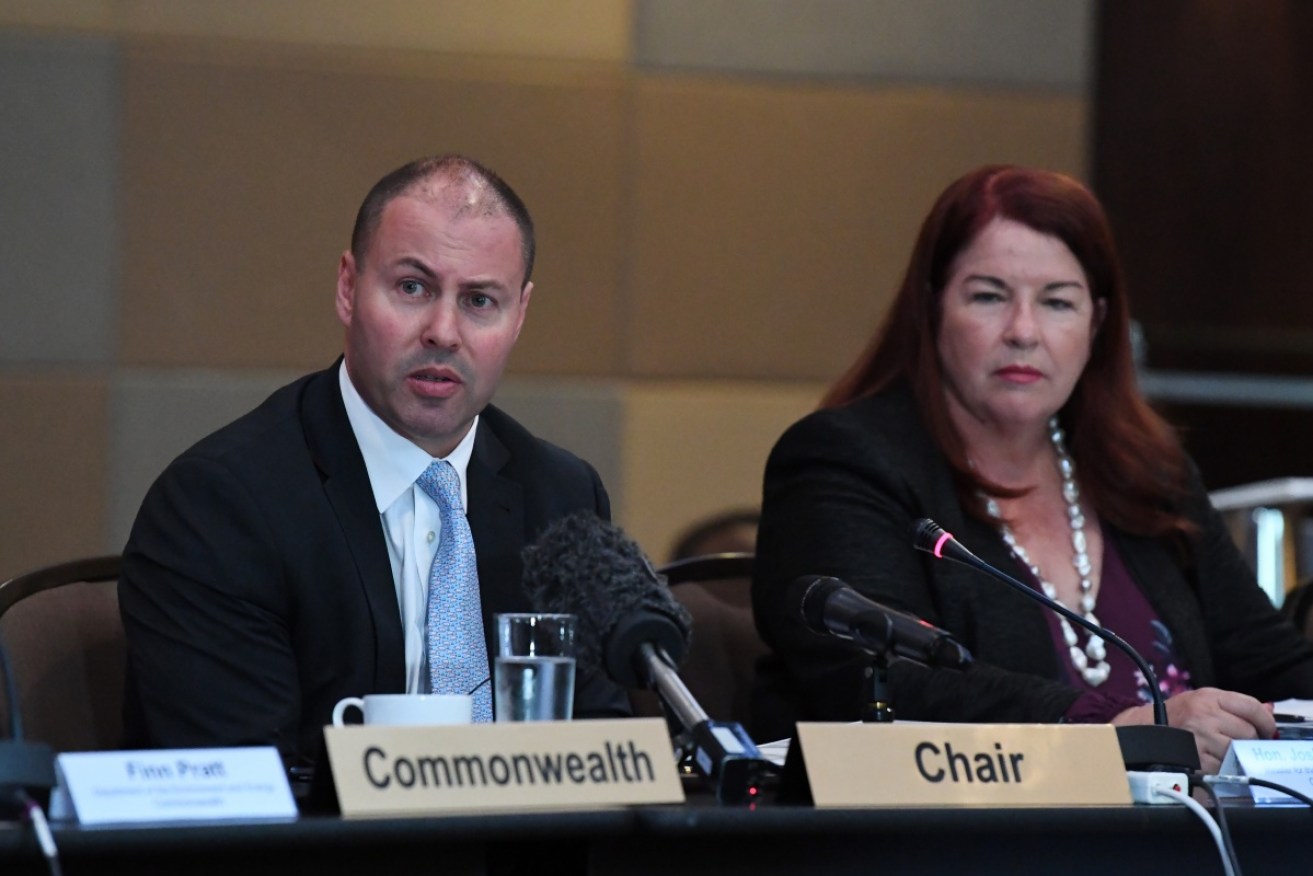Recycle-or-reuse requirement for all Australian packaging by 2025


Josh Frydenberg and Assistant Minister for the Environment Melissa Price at the COAG energy council meeting on Friday. Photo: AAP
Australian businesses will be forced to innovate the nation’s way out of a ‘recycling crisis’ with a decision to require all packaging in Australia to be recyclable or reusable by 2025.
Federal Minister for the Environment and Energy Josh Frydenberg met with state and territory counterparts at the Sofitel hotel in Melbourne on Friday to address a ban imposed by the Chinese on all recycled exports from Australia.
The decision was among a swathe of ideas pitched to address low-quality recyclables piling up across Australia following a Chinese ban on contaminated, imported recycling material.
Ministers discussed “waste to energy” incineration projects, converting waste to electricity, as well as efforts to assist the recycling sector through onshore processing facility investment, incentives to use recycled content and innovative design.
It follows the Queensland Council of Ipswich back-flipping on a decision to send kerbside recycled material to landfill, pointing to the import ban and contaminated recycling.
Deakin University School of Life and Environmental Sciences professor and waste management consultant Trevor Thornton told The New Daily more than $500 million in Victorian landfill levies alone could be used for more than “broad commitments” from the federal government.
Dr Thornton said the “recycling crisis” had long been ignored and the Chinese ban had forced the issue to the top of the national agenda.
“This is about looking at the crisis as an opportunity, thinking about what we’re doing and how we can improve,” he said.
About 3.5 per cent of Australia’s recycling from households, business and industry was exported in China in 2017, according to federal government estimates.
However, the proportions are high, with 29 per cent of all paper and 36 per cent of all plastics from kerbside recycling exported to China in 2017.
The contamination rate of Australia’s kerbside recycling averages between 6 to 10 per cent according to Fairfax, and fails to meet the Chinese acceptable threshold of 0.5 per cent even after recycling processing.
Dr Thornton said Australia needed a national approach towards recycling, with current policy varying greatly between states and territories.
He pointed to South Australia’s successful container deposit scheme, compared to the less effective ‘Return and Earn’ system in New South Wales.
“We could cherry pick schemes from states and territories and have a standard for education about [recycling] contamination and recycling schemes, as it’s thoroughly confusing,” Dr Thornton said.
Waste to energy projects were among Mr Frydenberg’s proposals, involving burning waste to produce energy.
Dr Thornton deemed the strategy a necessary solution in some situations, but said such projects were only one step better than sending material to landfill.
He said recycling was “fundamentally a business” and stressed recycling materials had value.
“Waste to energy is at the bottom of the hierarchy because in a sense you’re losing the resource.”
Dr Thornton said councils had to pay for recycling, and collectors charged to take material, but costs would fall if Australia could reduce transport and manage it’s own waste.
“Ultimately the costs come down to what we can sell it for, if we can sell it for a higher price, the costs to councils would go down and the material value will go up if we had better infrastructure and programs to reduce contamination,” he said.








